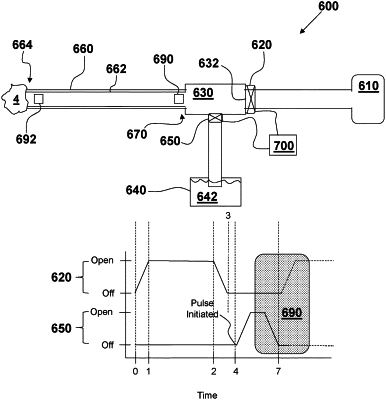| CPC A61B 17/22 (2013.01) [A61F 2/013 (2013.01); A61M 25/0075 (2013.01); A61B 2017/00022 (2013.01); A61B 2017/00154 (2013.01); A61B 2017/22079 (2013.01); A61B 2017/22082 (2013.01); A61B 2217/007 (2013.01); A61F 2/011 (2020.05)] | 13 Claims |

|
1. A method for removing thromboembolic material from a person using aspiration, comprising:
positioning a distal end of a catheter at least proximate to thromboembolic material in a blood vessel of the person;
applying a vacuum through a lumen of the catheter such that a vacuum flow draws at least a portion of the thromboembolic material into the catheter lumen;
stopping the vacuum flow through the catheter lumen such that a fluid column is positioned in the catheter lumen;
causing the fluid column to shift in a distal direction along the catheter lumen;
limiting the shift of the fluid column to a displacement limit of fluid at the distal end that imparts a controlled reversal of flow to the fluid column that slightly translates the thromboembolic material distally relative to the distal opening of the catheter lumen;
reapplying the vacuum through the catheter lumen thereby drawing the thromboembolic material into the catheter lumen; and
repeating the acts of stopping the vacuum flow, causing the fluid column to shift distally, limiting the shift of the fluid column and reapplying the vacuum through the catheter lumen, wherein the displacement limit for each distal shift of the fluid column is limited to a specific volume of liquid that exits the distal end of the catheter before vacuum is reapplied, whereby upon reapplication of vacuum the fluid column accelerates to the catheter such that the thromboembolic material accelerates back into the catheter lumen thereby deforming the thromboembolic material such that thromboembolic material is completely aspirated through the catheter lumen.
|